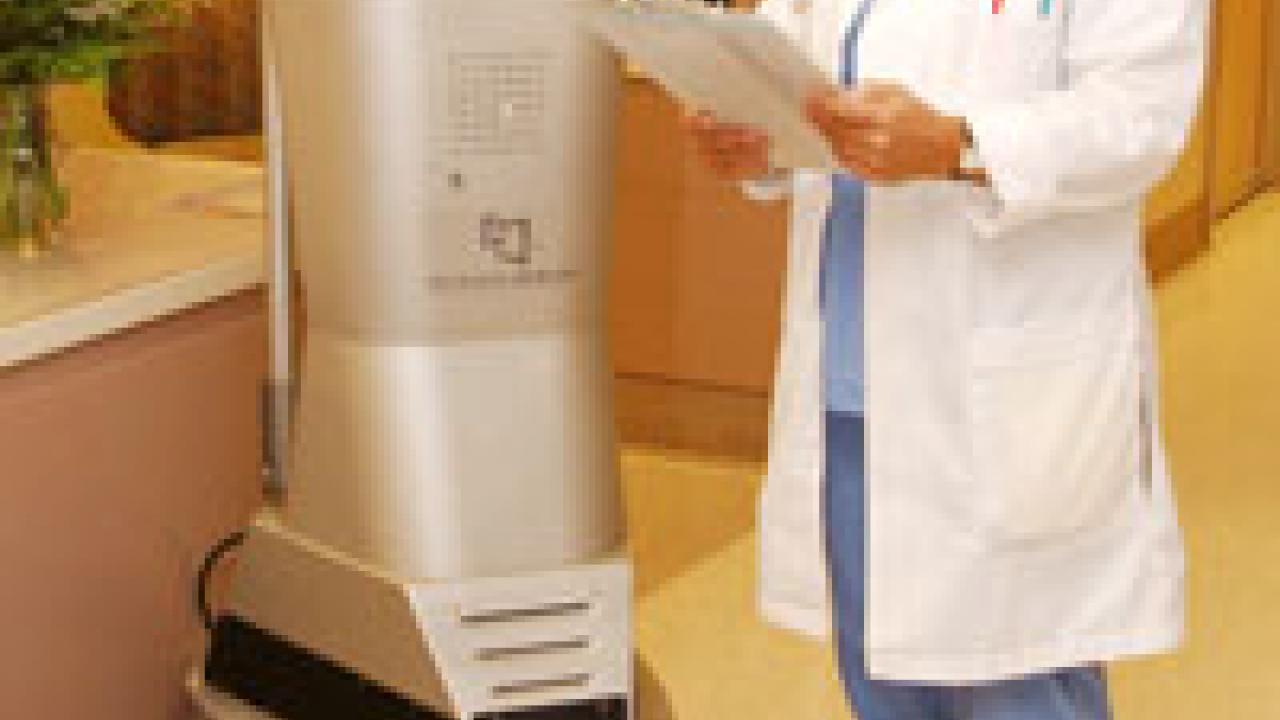UC Davis Medical Center has begun testing a new, five-and-a-half-foot-tall robot that allows physicians to personally check in and interact with their hospital patients following surgery -- without the doctor actually being there in person.
The medical center is one of four sites in the nation participating in a scientific study to determine if a robot is a useful and safe complement to the standard care following surgery. UC Davis urologist Lars Ellison is studying whether a surgeon can adequately assess patients from a remote location using a machine that is know affectionately around the hospital as "Rudy."
From his office or home, Ellison can guide a surprisingly agile machine down the halls of the hospital and right into the rooms of his patients. Equipped with a camera, TV screen and microphone, "Rudy" allows Ellison to have a conversation with his patient in much the same way traditional bedside rounds are conducted. Both the doctor and patient can see and hear each other, and the robot's camera can zoom in to provide a view of the patient's vital signs and surgical incision.
"We think using a robot that allows us to personally visit and check up on our patients after surgery will prove safe and effective," said Ellison. "This is another form of 'telemedicine,' which is becoming increasingly important because it can enhance the quality of care by helping doctors, nurses and other healthcare professionals do their jobs more efficiently and effectively."
Ellison participated in an earlier study at Johns Hopkins Hospital, which found patients prefer seeing their own doctor following surgery rather than a physician they don't know, even if their doctor only visited them via the robot.
Ellison also pointed out that the machine has other potential benefits because it could allow rural surgeons to maintain their care of patients at geographically remote hospitals and protect physician safety when a patient has a highly infectious disease or is suffering from a biochemical exposure.
The robot operates through the medical center's private wireless network, which was recently installed inside the hospital. To navigate the 200-pound machine and appear on its screen in a patient's room, the doctor uses a computer, video camera with built-in audio capabilities and a joystick similar to the ones used for video gaming.
This isn't the only robot currently in use at the medical center. For the past year, a surgical robot has been used in the operating room, where it can be less invasive and perform highly precise suturing.
Surgeons at UC Davis hone their skills with the device by visiting the hospital's Center for Virtual Care, where a robotics lab allows them to practice high-tech procedures.
Media Resources
Amy Agronis, Dateline, (530) 752-1932, abagronis@ucdavis.edu
